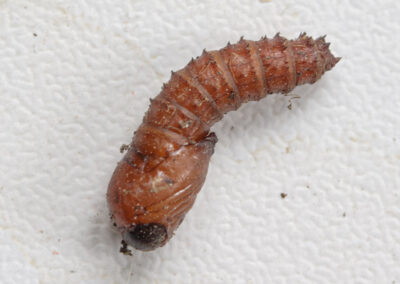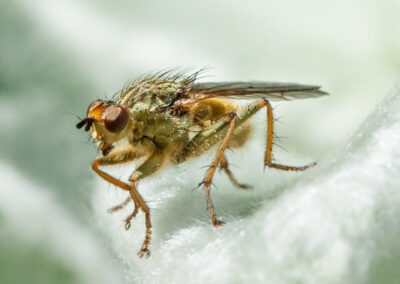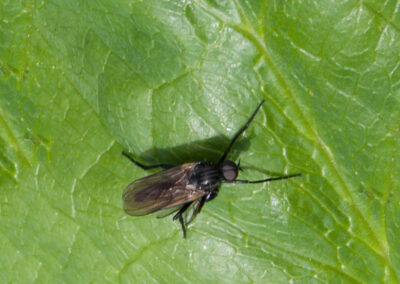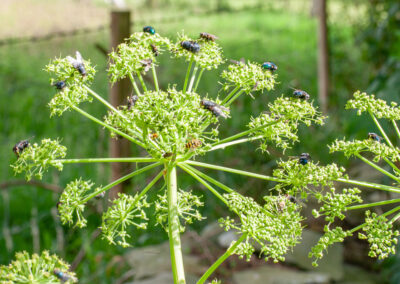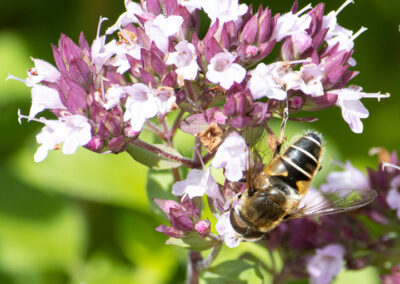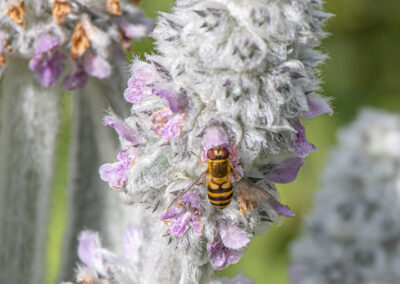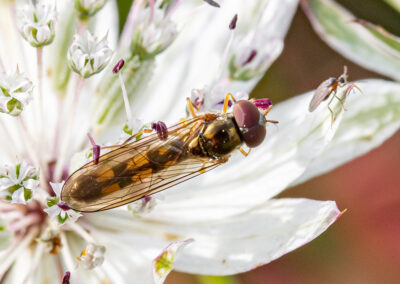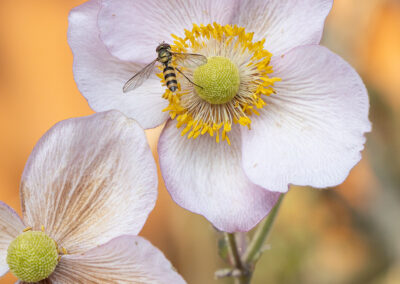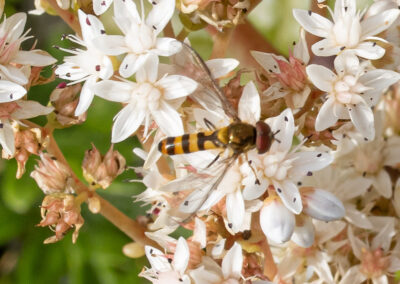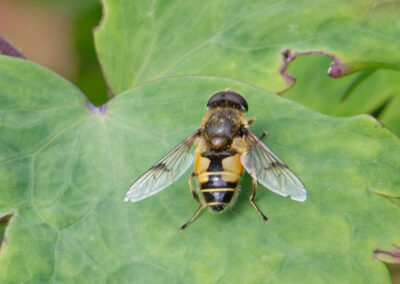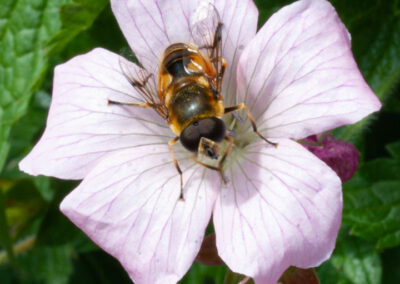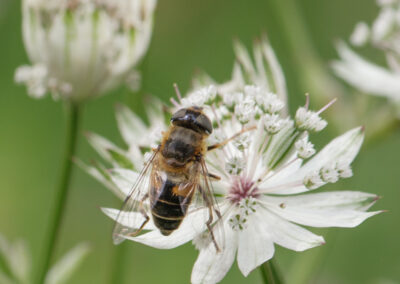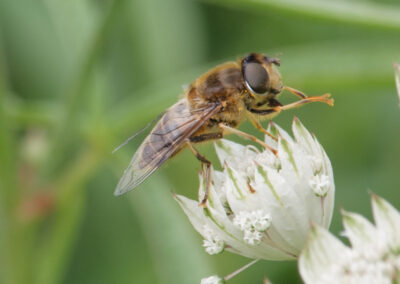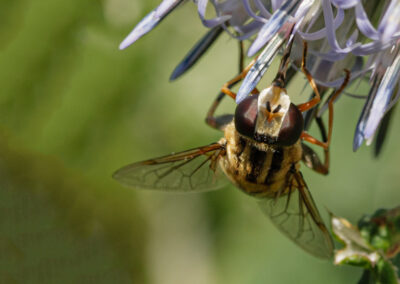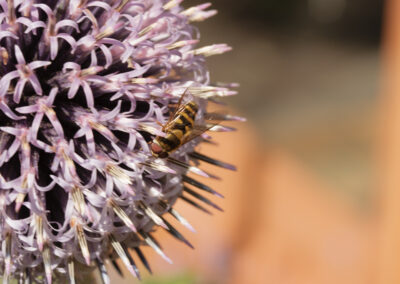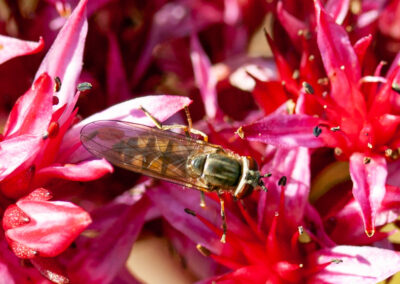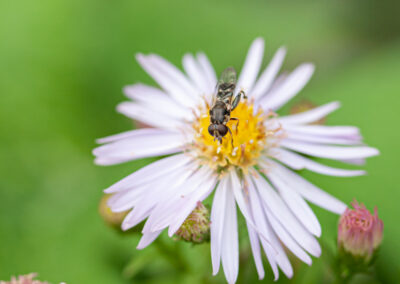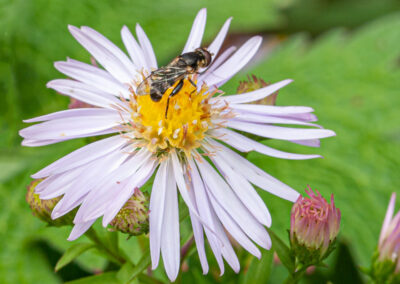Flies
Flies belong to the order Diptera, of which there is estimated to be about 1 million species world-wide, of which about 5,500 species live in the UK, including the families Soldier, Robber, Bee, Stiletto, Dance, Dagger, Crane, House, Snipe, Fruit, Hoverflies, Horseflies, Mosquitoes and Midges – and many more, totalling around 100 different families.
Unlike other insects also named ‘flies’, for example Dragonflies, Caddisflies, Mayflies, true flies have a single pair of wings, though in an earlier stage of their evolution they had two pairs, the second pair now being reduced to drumstick-shaped appendages (halteres) which help them to maintain balance when flying.
Their mouth parts are ‘designed’ for piercing and sucking, they do not have moveable jaws for biting or chewing.
Most flies undergo complete metamorphosis i.e. egg, larva (‘maggot’), pupa, imago (adult). The lifecycle can pass very quickly compared to many other types of insect, for example the housefly can take as little as 10 or 11 days from when an egg is laid until becoming a mature adult ready to lay eggs.
Flies provide the main food source for many of our insectivorous birds, and also, particularly the hoverflies, are important pollinators. It might not seem like it on some summer days, but their numbers are drastically declining, which has a knock-on effect on the animals that feed on them.
Rather than over-complicate matters here, I have kept all types of flies together, except for Hoverflies, which have their own gallery below.
Flies
Hoverflies
Hoverflies belong to the family Syrphidae within the order Diptera. There are about 280 species of them in the UK.
Although many species mimic the yellow and black colouring of stinging insects such as bees and wasps, they are completely harmless to humans, and of great benefit, both as pollinators when adult, and also some species are voracious consumers of aphids when in their larval stage.
Scaeva selenitica + Meliscaeva auricollis (1006)_960
Hoverflies Scaeva selenitica + Meliscaeva auricollis
Craneflies
There are 4 families of craneflies in the UK, about 360 species in total:
Tipulidae (long-palped craneflies) – 87 UK species.
Pediciidae (hairy-eyed craneflies) – 20 UK species.
Limoniidae (short-palped craneflies) – 227 UK species
Cylindrotomidae (damsel craneflies – 4 UK species)
– and the less closely-related families:
Trichoceridae (winter gnats) – 10-14 UK species.
Ptychopteridae (fold-wing craneflies) – 7 UK species.
The family with which most people are familiar is Tupilidae, commonly known as ‘daddy longlegs’.
The sexes can be distinguished by the shape of the end of the abdomen – the male’s is square-ended, whereas the female’s is pointed, with an ovipositor (egg-laying structure).
They are mostly nocturnal. The dull brown larvae, commonly known as ‘leatherjackets’, feed on plant roots, especially grasses.
Many species are attracted to light at night, are often caught in moth traps.
Midges
Midges are small flies, and include many families, including Net-winged Midges, Gall Midges, Biting Midges/Sandflies and Non-biting Midges.
A few species (not in the UK) are blood-sucking and can spread diseases, but most are harmless (even if sometimes annoying!) and many are useful as pollinators and as a major food source for such animals as frogs, birds and bats.
Most species are aquatic during their larval stage, commonly known as ‘bloodworms’.





